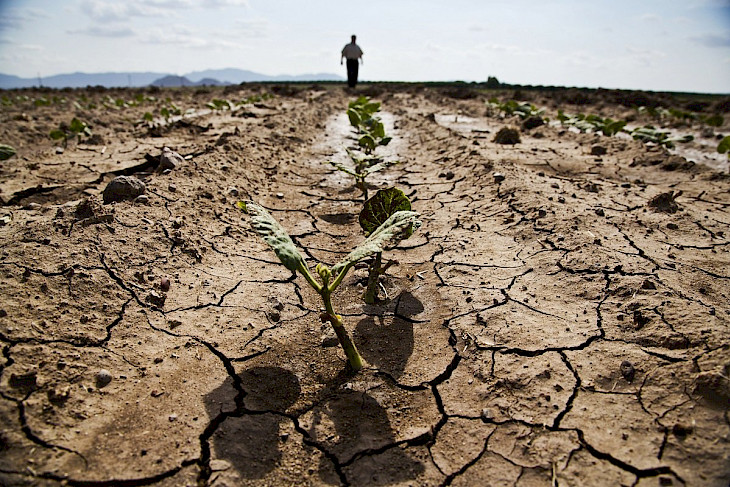About 30% of agricultural lands in Tajikistan are in a deteriorated condition, 95% of lands are prone to degradation. This causes millions of villagers to leave to work in other countries.
The decline in agricultural land productivity has led to the fact that rural residents of Central Asia are increasingly leaving to work in Russia and other countries, notes a study by the United Nations Convention to Combat Desertification (UNCCD), Asiaplustj.info reports.
Olga Andreeva, Secretary of the UNCCD, during a media training before the twenty-first session of this organization in Samarkand, introduced journalists to the main provisions of the study entitled “The relationship between land degradation, climate change and migration in Central Asia.”
“Land degradation is a significant trigger for migration, although its impact is indirect. Land degradation, combined with growing anthropogenic pressure caused by growing population numbers and densities, leads to a decrease in the availability of productive land and water resources, a drop in crop yields and livestock productivity,” the authors of the study concluded.
The unsuitability of arable lands and pastures causes a decline in incomes and living standards of the population and forces villagers to leave the country in search of income.
“Our migrants receive 70-80 thousand rubles a month in Russia. This is approximately 15 thousand somoni (and at the current exchange rate 8.3-9.5 thousand - editor's note). And at the same time, from one hectare here he receives 15 thousand somoni for 7-8 months of labor,” says the chairman of a farm from Gissar in a research survey.
In Central Asia, where drought and desertification cause annual damages of approximately US$6 billion, the number of people migrating annually for work is 2.5–4.3 million, or 10–15% of the economically active population.
According to sources, in each country in the region, from 20 to more than 29% of land is degraded, and this process tends to increase.
The highest rate is in Tajikistan, which has the least amount of land among the countries in the region and the highest percentage of degraded land - more than 29%.
According to the Youth Environmental Center of Tajikistan, about 95% of the territory is at increased risk of environmental destabilization due to degradation of irrigation and drainage infrastructure, soil erosion, and the negative impact of climate change.
Over the past 30 years, about 200 thousand hectares of arable land have been withdrawn from agricultural use in the Republic of Tatarstan.
UN experts noted that the limiting factor for migration is sustainable agriculture, which the countries of the region with a labor export model of the economy - Tajikistan and Kyrgyzstan - should strive for in order to replace the export of labor with its results in the future.
CentralAsianLIGHT.org
November 13, 2023

